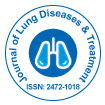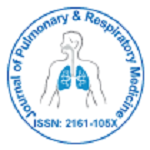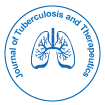Theme: Impact Of COVID-19 On Tuberculosis Control Across The Globe
Tuberculosis 2020
Conference series LLC LTD is inviting to join the “2nd World Congress on Advancements in Tuberculosis and Lung diseases” on July 02-03, 2020. Webinar Conference.
World Health Organization announced that, “The influx of large numbers of people to mass gathering events may give rise to specific public health risks because of COVID-19 occurrence more through over the world”.
Because of that conference series recommends scientists, delegates and scholars to participate in online events and webinars. These events make your participation in online with guarantee the health of all involved in the events due to there is no physical gathering. From home with safe you can explore your ideas about your research.
Webinars and Online event aims to support all scientists and scholars from all over the world in delivering their ideas by a safe and successful event. The goal of webinar/online event is to make international online events as safe as possible from public health risks of the Covid-19 with technical support to host for events. It's our privilege to invite all the researchers, developers, and experts on behalf of committee members to be the part of the prestigious Webinar on Tuberculosis-2020 schedule on July 02-03, 2020 & will be organized online. We aim to unify all the people indulged in this vast field and share the knowledge, explore and look forward to the new way by integrating new thoughts and customizing the limits of future technology.
Tuberculosis-2020 offers a dais to take attention to explore, grip and meet with prominent speakers of the field, including both broad and specific subjects. The Tuberculosis and Lung Diseases 2020 will be surrounding around the theme “Impact Of COVID-19 On Tuberculosis Control Across The Globe”.
Target audience
Pulmonologists
TB Surgeons
TB Physicians
Scientists
Research scholars
Pathologists
Tuberculosis Lung disease associations/societies
Business persons
Psychiatrists
Industrialists
Directors/Managers
Infectious diseases
Track 01: Tuberculosis
Tuberculosis is a communicable disease, caused by infectious bacteria Mycobacterium tuberculosis. It affects lungs and other parts of the body (brain, spine). People around the world are mostly suffering from tuberculosis because it’s an air borne pathogen, so can spread easily around. It is classified into latent and active tuberculosis. In latent tuberculosis, bacteria remain in the body as inactive. In active tuberculosis bacteria in the body replicates leading to severe infectious disease. One-third population around the world has latent tuberculosis also, 10% of chances in latent tuberculosis to active because of various conditions like malnutrition, low immunity and smoking. Active tuberculosis mostly occurs in people with HIV/AIDS and smokers. Around 15to 20% active tuberculosis occurs outside the lungs. Extra pulmonary tuberculosis occurs mainly in person with low immune system and HIV. 8% of population is affected to tuberculosis due to smoking.
Related tuberculosis conferences:
International Conference on Tuberculosis and Respiratory disease, February 10-11 2020, Paris, France | 11th Annual Congress on Pulmonology and Respiratory Medicine March 20-21 2020, Amsterdam, Netherlands | 10th International Conference on COPD and Lungs May 25-26 2020, Kyoto, Japan | 11th Global Expert Meeting on Pulmonology and Respiratory Medicine December 04-05 2019, Tokyo, Japan | 11th International Chronic Obstructive Pulmonary Disease Conference November 18-19 2019, London, UK.
Track 02: Epidemiology of tuberculosis
Epidemiology is branch of science which makes effective ideas for preventing the illness and provides precautions to patients suffering. More than one-quarter of world population is affected with mycobacterium infections. Tuberculosis is widely spreadable disease after HIV/AIDS. Tuberculosis was at high in 2003 which gradually reduced over the years and during 2007 most of people globally were affected by tuberculosis. In developed countries tuberculosis is relatively less familiar. Tuberculosis is generally referred as urban disease. Tuberculosis is mainly caused in geriatrics and low immune. Most of the M .bacterium infection is non- contagious. About 95% of infection is asymptomatic.
Related tuberculosis conferences:
International Conference on Pulmonology on Respiratory medicine November 07-08 2019, Paris, France | 7th Annual Congress on Pulmonary and Critical Care October 28-29 2019, Tokyo, Japan | International Conference on Tuberculosis and Respiratory disease, February 10-11 2020, Paris, France | 10th International Conference on COPD and Lungs May 25-26 2020, Kyoto, Japan| 11th Annual Congress on Pulmonology and Respiratory Medicine March 20-21 2020, Amsterdam, Netherlands.
Track 03: Drug discovery and development in tuberculosis
In the history drugs are discovered through the active ingredients from age old remedies, but during the present day’s disease are controlled by molecular and physiological level. The healthy approach towards discovering new drugs also measures to reduce the prolonged clinical development of new drugs.it involves the details about the preclinical and clinical trials of tuberculosis. Antibiotic drugs became shortage due to multiple drug resistance which is main cause of tuberculosis. New drug discovery uses the inactive bacteria to develop new drug for tuberculosis. Mycobacterium is resistant to most the antibiotics. To achieve the shorter duration therapy it is expected to destroy the sub population of mycobacterium.
Related tuberculosis conferences:
International Conference on Tuberculosis and Respiratory disease, February 10-11 2020, Paris, France | 11th Annual Congress on Pulmonology and Respiratory Medicine March 20-21 2020, Amsterdam, Netherlands |10th International Conference on COPD and Lungs May 25-26 2020, Kyoto, Japan | 11th Global Expert Meeting on Pulmonology and Respiratory Medicine December 04-05 2019, Tokyo, Japan | 11th International Chronic Obstructive Pulmonary Disease Conference November 18-19 2019, London, UK.
Track 04: Drug resistant tuberculosis (MDR-TB)
Drug resistance tuberculosis is a tuberculosis infection caused by infectious bacteria that are resistant to treatment of first line anti tubercular drugs. Insufficient drug delivery is the main cause of drug resistance. Some tuberculosis infectious bacteria are also resistant to second line drugs referred as extensively drug resistant TB. Beginning of antibiotic treatment, some strains of TB bacteria produced resistance to specific drugs through genetic changes. Multi drug resistance require second line drug which are less effective and more active. 9% of MDR-TB are resistant to one of the drugs in the group comes under XDR-TB. Increase in resistance level in tuberculosis strain causes complication for public health to control tuberculosis.
Related tuberculosis conferences:
International Conference on Pulmonology on Respiratory medicine November 07-08 2019, Paris, France | 7th Annual Congress on Pulmonary and Critical Care October 28-29 2019, Tokyo, Japan | International Conference on Tuberculosis and Respiratory disease, February 10-11 2020, Paris, France | 10th International Conference on COPD and Lungs May 25-26 2020, Kyoto, Japan| 11th Annual Congress on Pulmonology and Respiratory Medicine March 20-21 2020, Amsterdam, Netherlands.
Track 05: Tuberculosis-HIV co-infection
Tuberculosis is an opportunistic infection and is easily affected to the people with HIV. HIV weakens the immune system which increases chance of getting affected with tuberculosis. Person have both HIV/tuberculosis is referred as HIV-tuberculosis co-infection. Conditions become severe in the case of multidrug resistance tuberculosis and extensively drug resistance tuberculosis is difficult to cure and causes increase in mortality. Pro inflammatory cytokine production by tuberculous granulomas is connected with HIV viremia which leads to the cause of disease. Untreated latent TB infection can be easily activated to TB disease in HIV patients due to their low immunity. If not treated it leads to death. TB is difficult to diagnose in HIV positive patient than a person with only TB.HIV-TB coinfection people are treated with anti-retroviral therapy and anti-tubercular drugs. Advantages of early anti- retroviral drugs includes decreased trend of mortality.
Related tuberculosis conferences:
International Conference on Tuberculosis and Respiratory disease, February 10-11 2020, Paris, France | 11th Annual Congress on Pulmonology and Respiratory Medicine March 20-21 2020, Amsterdam, Netherlands |10th International Conference on COPD and Lungs May 25-26 2020, Kyoto, Japan | 11th Global Expert Meeting on Pulmonology and Respiratory Medicine December 04-05 2019, Tokyo, Japan | 11th International Chronic Obstructive Pulmonary Disease Conference November 18-19 2019, London, UK.
Track 06: Tuberculosis and rehabilitation
Rehabilitation is restoring someone into normal life style. Rehabilitation plays a major role in tuberculosis patient because of mediation and therapy course during the treatment. The side effects of TB medication are extensive so it requires rehabilitation or extensive therapy. There are many side effects during medication course which causes depression. Due to pressure faced during the treatment and post treatment makes the patient weak so rehabilitation of one to one session, counselling after course allows them to deal with external pressure.
Related tuberculosis conferences:
International Conference on Pulmonology on Respiratory medicine November 07-08 2019, Paris, France | 7th Annual Congress on Pulmonary and Critical Care October 28-29 2019, Tokyo, Japan | International Conference on Tuberculosis and Respiratory disease, February 10-11 2020, Paris, France | 10th International Conference on COPD and Lungs May 25-26 2020, Kyoto, Japan| 11th Annual Congress on Pulmonology and Respiratory Medicine March 20-21 2020, Amsterdam, Netherlands.
Track 07: Nanotechnology approach in tuberculosis
Nanotechnology is duplicating the matter on an atomic scale. Nanotechnology refers to building the structure in micro level. Development of novel drugs decreases the drug resistance and drug interaction. In the past years many research are done in developing the nanotechnology based therapy for replacing the administration of antibiotics. Different animal model are tired to develop antibiotic therapy using polymer technology. Nanoparticles are made up of biocompatible and biodegradable which is either natural or synthetic .they can easily dissolve in cell .polymeric nanoparticles represent as bio adhesive in gastro intestinal tract. Poly lactic-co-glycolic acid [PLGA] is a copolymer accepted by food and drug administration for therapeutic purpose. Nano beads have the slow and sustained release of particles. Introduction of nanoparticles allows decreasing the side effects, multiple drugs can be encapsulated in a matrix, high constancy.
Related tuberculosis conferences:
International Conference on Tuberculosis and Respiratory disease, February 10-11 2020, Paris, France | 11th Annual Congress on Pulmonology and Respiratory Medicine March 20-21 2020, Amsterdam, Netherlands |10th International Conference on COPD and Lungs May 25-26 2020, Kyoto, Japan | 11th Global Expert Meeting on Pulmonology and Respiratory Medicine December 04-05 2019, Tokyo, Japan | 11th International Chronic Obstructive Pulmonary Disease Conference November 18-19 2019, London, UK.
Track 08: Diagnosis and treatment of tuberculosis
Diagnosis of tuberculosis is done by taking the biological specimen from the patient. Other tests are conducted to identify latent tuberculosis or active tuberculosis. Other tests include chest x-ray, sputum sample, blood tests. Most common diagnostic test is PPD tuberculin test in which small amount of bacteria is extracted. Direct observation therapy treatment provides a health care professional to look medication till the course is completed. People with low immune system get affected by active tuberculosis. If not treated well it affects the total lungs and cause complication in the body. Nucleic acid amplification test and adenosine deaminase test allow fast curing of TB. Treatments include medication, chemoprophylaxis decrease the risk of occurring of active tuberculosis in latent tuberculosis patients. Vaccination and prevention are the best way to stay away from tuberculosis.
Related tuberculosis conferences:
International Conference on Pulmonology on Respiratory medicine November 07-08 2019, Paris, France | 7th Annual Congress on Pulmonary and Critical Care October 28-29 2019, Tokyo, Japan | International Conference on Tuberculosis and Respiratory disease, February 10-11 2020, Paris, France | 10th International Conference on COPD and Lungs May 25-26 2020, Kyoto, Japan| 11th Annual Congress on Pulmonology and Respiratory Medicine March 20-21 2020, Amsterdam, Netherlands.
Track 09: Pulmonary disease and lung cancer
Pulmonary disease is the common medical condition around the world. Pulmonary disease affects the organ that makes it difficult in breathing animals. Obstructive lung disease causes obstruction of air passage due the inflammation in the lungs. Restrictive lung disease causes the loss of stretching and expanding in lungs. Chronic respiratory disease is the long term disease the inflammation appears in lungs and treatment is present to shortening of passage. At present there is no solution for the treatment of chronic obstructive pulmonary disease, the lung diseases mostly affect the bronchi and small branches of trachea. Death caused by the cancer includes lung cancer where most of men and women are affected. Lung cancer can affect any part of the lung but mostly affects the air sac where multiplication of cells takes place. Treatment for lung cancer includes surgery, chemotherapy, radiation therapy and targeted therapy. Main cause of lung cancer is smoking.
Related tuberculosis conferences:
International Conference on Tuberculosis and Respiratory disease, February 10-11 2020, Paris, France | 11th Annual Congress on Pulmonology and Respiratory Medicine March 20-21 2020, Amsterdam, Netherlands |10th International Conference on COPD and Lungs May 25-26 2020, Kyoto, Japan | 11th Global Expert Meeting on Pulmonology and Respiratory Medicine December 04-05 2019, Tokyo, Japan | 11th International Chronic Obstructive Pulmonary Disease Conference November 18-19 2019, London, UK.
Track 10: Interstitial lung disease
Interstitial lung disease is a circular term for a wide group of diseases that develops fibrosis of lungs. It makes difficult to breathe. It is caused due to the frequent exposure to asbestos, Rheumatoid arthritis. Lung scaring is irreversible and lung transplantation is the solution for interstitial lung disease. Interstitial lung diseases in children are referred as children’s interstitial lung disease.Interstitial lung diseases are used to differentiate from obstructive respiratory disease. Our body produce write amount of tissues to retain back from injury. Interstitial lung disease along with pulmonary sarcoidosis affected around 1.2 million people. Inhaling the air contaminated with bacteria, fungi cause hypersensitivity pneumonitis. Replacement of normal lung with scar tissues cause decreased oxygen capacity. Chest radiography is the initial step to detect the disease. Whereas, in interstitial lung disease the tissues gets stored forms thickening which leads to narrow passage of air.
Related tuberculosis conferences:
International Conference on Pulmonology on Respiratory medicine November 07-08 2019, Paris, France | 7th Annual Congress on Pulmonary and Critical Care October 28-29 2019, Tokyo, Japan | International Conference on Tuberculosis and Respiratory disease, February 10-11 2020, Paris, France | 10th International Conference on COPD and Lungs May 25-26 2020, Kyoto, Japan| 11th Annual Congress on Pulmonology and Respiratory Medicine March 20-21 2020, Amsterdam, Netherlands.
Track 11: Chronic obstructive pulmonary disease
Chronic obstructive pulmonary disease is obstructive lung disease which is caused due to short breathing. It’s a developing disease which makes difficulty in the everyday core activities. Medication used for treating is bronchodilators which allows in widening of air passage. The progressing disease includes emphysema, chronic bronchitis and asthma.Chronic bronchitis is frequent coughing for 3 months a year and continued for 3years. Coughing is the main condition for COPD. Emphysema is presence of air or gas in tissues. Smoking, air pollution; genetics are some of the causes of COPD. Spirometer is instrument used to detect the disease. Shortness of breath, wheezing, and frequent coughing indicates the presence of COPD. Smoking is one of the key elements of causing COPD.COPD conference develops new ideas and techniques of pulmonary therapy.
Related tuberculosis conferences:
International Conference on Tuberculosis and Respiratory disease, February 10-11 2020, Paris, France | 11th Annual Congress on Pulmonology and Respiratory Medicine March 20-21 2020, Amsterdam, Netherlands |10th International Conference on COPD and Lungs May 25-26 2020, Kyoto, Japan | 11th Global Expert Meeting on Pulmonology and Respiratory Medicine December 04-05 2019, Tokyo, Japan | 11th International Chronic Obstructive Pulmonary Disease Conference November 18-19 2019, London, UK.
Track 12: Neonatal lung disease
Neonatal lung disease is most common in premature babies preferably before the 3rd trimester because of lack of surfactant produced cause problem in expanding of lungs. Some of the lung disease that affects the neonatal is bronchopulmonary dysplasia, Childhood interstitial lung disease, Meconium aspiration syndrome, and pneumonia. Surfactant replacement therapy is used in infants to cure respiratory distress syndrome. Lung diseases are most common in the neonates. Patent ductus arteriosus is the major cause for toxicity and death in premature babies. Respiratory syncytial virus is most common viral lung infection in both infants and premature infants. Wide knowledge on pathophysiology of lung disease and better understanding allowed developing more effective safe therapies for active and chronic disease. Pneumonia is the major cause of death in children in the developing countries.
Related tuberculosis conferences:
International Conference on Pulmonology on Respiratory medicine November 07-08 2019, Paris, France | 7th Annual Congress on Pulmonary and Critical Care October 28-29 2019, Tokyo, Japan | International Conference on Tuberculosis and Respiratory disease, February 10-11 2020, Paris, France | 10th International Conference on COPD and Lungs May 25-26 2020, Kyoto, Japan| 11th Annual Congress on Pulmonology and Respiratory Medicine March 20-21 2020, Amsterdam, Netherlands.
Track 13:Lung infections
Lung infection is caused by the attack of microorganisms such as bacteria, fungi and virus commonly referred as pneumonia. Pneumonia causes inflammation in alveoli of lungs. Dry cough, fever, chest pain are some symptoms of pneumonia. Around 7% of population is dying due to lung infection. Pneumonia can also be occurred through mixed infections like bacteria and virus in which 45%children and 15% adult are affected. Vaccines are used to prevent the infection. Mostly occur in geriatric people. Pneumonia in children is by coughing, difficulty in breathing in rapid respiratory rate and low level of consciousness. Diagnosis depends on the condition and external examination. Chest X ray, blood test and sputum test conforms the condition.7%of population is affected by lung infection.
Related tuberculosis conferences:
International Conference on Tuberculosis and Respiratory disease, February 10-11 2020, Paris, France | 11th Annual Congress on Pulmonology and Respiratory Medicine March 20-21 2020, Amsterdam, Netherlands |10th International Conference on COPD and Lungs May 25-26 2020, Kyoto, Japan | 11th Global Expert Meeting on Pulmonology and Respiratory Medicine December 04-05 2019, Tokyo, Japan | 11th International Chronic Obstructive Pulmonary Disease Conference November 18-19 2019, London, UK.
Track 14: Lung transplantation
Lung transplantation is a medical surgery where the infected lung is partially or completely replaced by new lung donated by a donor. Living donor can donate a single lobe. Lung transplantation takes place only when any other function is not affecting the patient. Transplantation allows in improving the ability to breath and person should take lifelong immune suppressing medication. Lung transplantation is done when inability to take oxygen. Most of the lung transplantations are done for COPD. From latest figures of organ procurement and transplantation network shows that about 37000 lung transplants took over the years from 1988. Survival rate of lung transplantation has increased from few years and 80% survival rate in one year single transplantation. Severity of disease cannot transplant due to specific reasons as HIV, hepatitis, congestive heart failure and liver disease. There are certain conditions for donor due to required character of recipient. Living donor also phases some affects transplantation is the last option to cure lung failure. Numerous tests and qualifying criteria take place for transplanting. Immunosuppressant is taken after lung transplantation to protect the new lung.
Related tuberculosis conferences:
International Conference on Pulmonology on Respiratory medicine November 07-08 2019, Paris, France | 7th Annual Congress on Pulmonary and Critical Care October 28-29 2019, Tokyo, Japan | International Conference on Tuberculosis and Respiratory disease, February 10-11 2020, Paris, France | 10th International Conference on COPD and Lungs May 25-26 2020, Kyoto, Japan| 11th Annual Congress on Pulmonology and Respiratory Medicine March 20-21 2020, Amsterdam, Netherlands.
Track 15: Diagnosis and treatment of lung disease
During breathing inhale of oxygen taken place where it is then transferred to the blood streams. Also, one-third population in United States is suffering from lung disease. Smokers mostly get affected by the lung diseases and several therapies are also given to control smoking. Spirometer is the instrument used to detect functioning of the lung. It is used to check the amount of air enter in to lungs and air coming out. Spirometer is used to detect the COPD and monitor the treatment. Diagnosis of lung disease can be conducted by performing tests like biopsy, blood test, bronchoscopy, sputum test and CT scan. Many various kinds of treatment are provided to expand the shortening of passage and to control symptoms to develop better health. Treatment depends on the cause of the disease and health status of patient. Curing of lung disease includes medication, surgery, and oxygen therapy and lifestyle changes. Smoking cessation allows controlling the disease. Bronchodilators are used in the treatment of lung disease which relaxes the muscles around the air sacs, shortening of breathing making breathing easier. lung therapies allows to improve health and lifestyle change.
Related tuberculosis conferences:
International Conference on Tuberculosis and Respiratory disease, February 10-11 2020, Paris, France | 11th Annual Congress on Pulmonology and Respiratory Medicine March 20-21 2020, Amsterdam, Netherlands |10th International Conference on COPD and Lungs May 25-26 2020, Kyoto, Japan | 11th Global Expert Meeting on Pulmonology and Respiratory Medicine December 04-05 2019, Tokyo, Japan | 11th International Chronic Obstructive Pulmonary Disease Conference November 18-19 2019, London, UK.
Track 16: Current and future trends in tuberculosis
Tuberculosis has shown higher rate of mortality than HIV because bacteria undergoes genetic mutation and forms resistance to present effective antibiotics. In 2013 WHO detected multiple drug resistance of 480,000 cases. There has been a great success in effective techniques in preventive care, infection care and treatment. Annual mortality rate has decreased since 1990. A sequence of international clinical trials by The British Medical council research, a four drug regimen was given for use in recently diagnosed tuberculosis patient. In latest research techniques of vaccines or new drug development are used to reduce risk in latently infected people. Despite of increasing funds in tuberculosis only 20 clinical trials of drugs and 12 vaccines are conducted.
Related tuberculosis conferences:
International Conference on Pulmonology on Respiratory medicine November 07-08 2019, Paris, France | 7th Annual Congress on Pulmonary and Critical Care October 28-29 2019, Tokyo, Japan | International Conference on Tuberculosis and Respiratory disease, February 10-11 2020, Paris, France | 10th International Conference on COPD and Lungs May 25-26 2020, Kyoto, Japan| 11th Annual Congress on Pulmonology and Respiratory Medicine March 20-21 2020, Amsterdam, Netherlands.
Importance and factors in the scope of tuberculosis and lung disease conference 2020.
Tuberculosis:
Tuberculosis is the most common disease deaths worldwide.it is also the main cause of death in people having HIV/AIDS. In 2017 the largest number of new tuberculosis cases occurred in Southeast Asia and western specific region followed by African region. The drug Pretomanid was developed by TB alliance and approved by US FDA which is now used to treat XDR-TB. The global health community has set a target to end TB the mortality rate by 2035 up to 90%. In 2019 WHO has liberated a multisectoral accountability framework to increase progress to end TB. The world anti-tuberculosis therapeutics market was valued about 1.2million in 2018, and is expected to reach a value of USD 1.5 million by 2024. These therapeutic treatments contain both first line, second line and multiple drug treatment. The market of TB is also witnessing growth like technological developments in the fields of genomics and proteomics. Majority of funding from the developed countries are toward Asian countries. Since the mortality is high, due to various factors such as HIV and diabetes leading to tuberculosis. Asia-pacific is excepted to show profitable growth over the high burden of tuberculosis and rapid growth of disease. The upper trend growth of TB in south East . Asian countries aim to eliminate Tuberculosis by 2025, which is anticipated to act as one of the major role in the growth of the Asia-Pacific market during upcoming period.
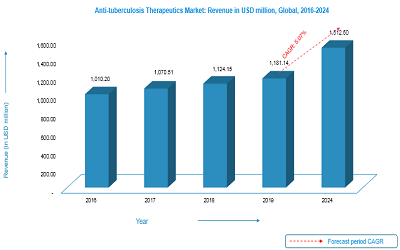
Source: Mordor Intelligence
Lung diseases:
Lung disease shows significant challenges to health system worldwide and is major contributors to whole population morbidity and mortality. The global Respiratory Drug market is estimated to show a CAGR of 5.9% during the coming period of 2018-2024. The respiratory drug market is analyzed based on application and regional segments. North America, Europe, East Pacific shows the largest share of the global Respiratory Drug market where 60% of market is done by North Americans in that USA is major production of drug market. The Asia pacific respiratory devices market is anticipated to show CAGR of 6.5% in upcoming period. Unfulfilled medical needs in emerging markets, like India are anticipated to serve these market as future growth opportunities. The 2030 Sustainable Development Agenda was adopted by world leaders in 2015 at a historic UN summit in New York and came into action on January 1, 2016. The plan is to achieve 17 Sustainable development Goals and 169 targets by the year 2030. Lung diseases occur as a result of an obstruction within a blood vessel supplying blood to the brain. Fat deposits lining the vessel walls are basics conditions of lung diseases. The global market for lung diseases is anticipated to be at a CAGR of about 8.3% during the coming period 2017-2023.
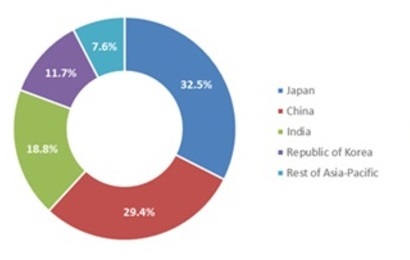
Asia-pacific Respiratory Inhaler Market,By country,2016-2023(%)
Source: Market research future.
Conference Highlights
- Tuberculosis
- Epidemiology of tuberculosis
- Drug discovery and development in tuberculosis
- Drug resistant tuberculosis (MDR-TB)
- Tuberculosis-HIV co-infection
- Pulmonary diseases and lung cancer
- Tuberculosis and rehabilitation
- Nanotechnology approach in tuberculosis
- Diagnosis and treatment of tuberculosis
- Interstitial lung disease
- Chronic obstructive pulmonary disease
- Neonatal lung disease
- Lung infections
- Lung transplantation
- Diagnosis and treatment of lung disease
- Current and future trends in tuberculosis
To share your views and research, please click here to register for the Conference.
To Collaborate Scientific Professionals around the World
| Conference Date | July 02-03, 2020 | ||
| Sponsors & Exhibitors |
|
||
| Speaker Opportunity Closed | Day 1 | ||
| Poster Opportunity Closed | Click Here to View | ||
Useful Links
Special Issues
All accepted abstracts will be published in respective Our International Journals.
- Journal of Lung Diseases & Treatment
- Journal of Pulmonary & Respiratory Medicine
- Journal of Tuberculosis and Therapeutics
Abstracts will be provided with Digital Object Identifier by







